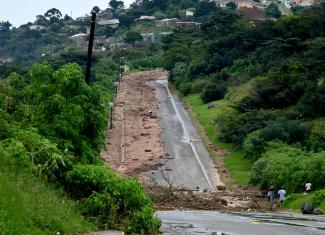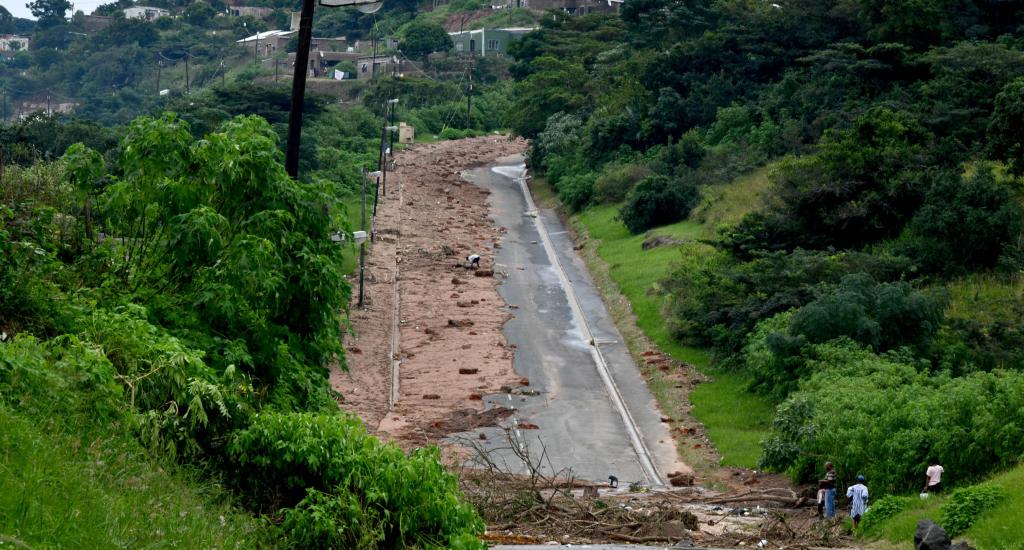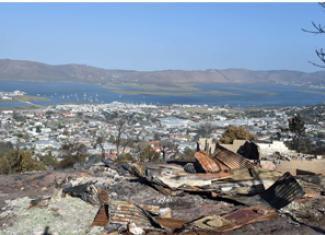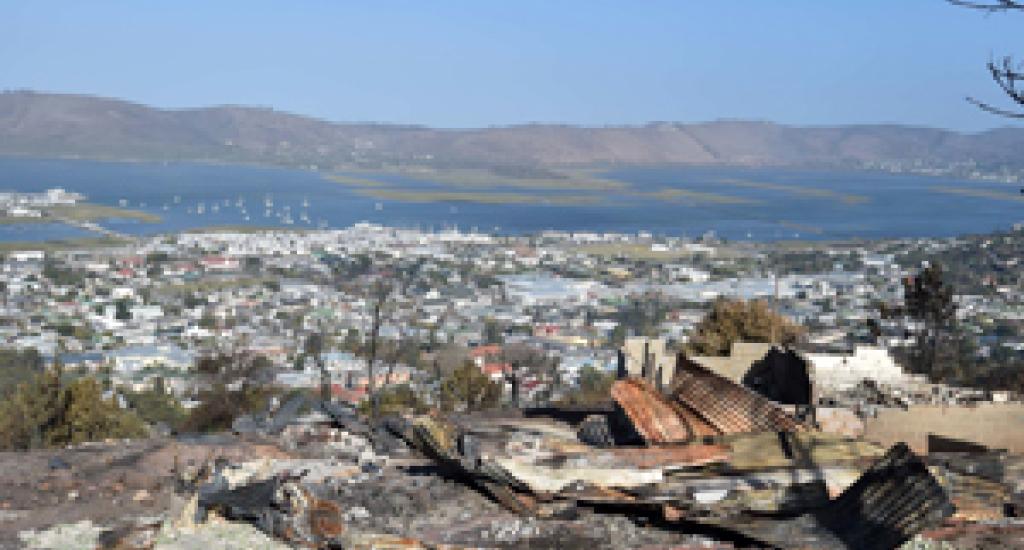Understanding the role of the NDMC in disaster classification and management

Like other countries around the world, South Africa has become acquainted with the frightening side of mother nature, which has left some without a roof over their heads and led to the loss of livelihoods for others.
Many would recall the devastating floods that hit KwaZulu-Natal in 2022, where over 400 people lost their lives, while almost 4 000 homes were completely destroyed.
The adverse weather led Cabinet to declare a National State of Disaster in response to the rains in KwaZulu-Natal and parts of the Eastern Cape at the time.
In the subsequent years, inclement weather has continued to batter the two provinces as well as other parts of the country.
Just last year, veld fires hit various parts KwaZulu-Natal, claiming the lives of 14 people, including six firefighters. North West was also not spared as it battled to extinguish veld fires in 2022, which destroyed over 50 000 hectares of grazing land in the Kagisano Molopo Local Municipality.
In an interview with Public Sector Manager, Head of the National Disaster Management Centre (NDMC), Dr Elias Sithole said the country is prone to climate shocks.
“Yes indeed, South Africa is increasingly prone to natural hazards and climate shocks. The consequences of natural hazard events and climate change across the country, are influenced not only by the natural hazard
and climate change related events themselves, but also by a variety of physical, socio-economic and environmental factors.
“These include geographic location of the urban centre where people want to relocate to, poverty rates among urban residents, levels of access to basic services as well as the health of surrounding ecosystems,” he explained.
He added that a single disaster event has the potential to erode many years of economic development gains by damaging critical infrastructure and by diverting resources away from development spending like health and education, toward disaster response and reconstruction efforts.
He explained that some provinces are more prone to floods due to their location.
“KZN [KwaZulu-Natal] and the Eastern Cape are coastal provinces and, therefore, have the full impact of both sea and land hazards. Sea surfaces and their accompanying temperatures have a strong influence on types of storms and length of storms.”
Classification of a disaster
Asked about what goes into classification of a disaster, Sithole said there is a difference between the classification of a disaster and the declaration of a state of disaster.
“This is often not clearly under- stood and, therefore, people use the phrases as interchangeable when they are in fact, not.”
The classification of a disaster is done by the Head of the NDMC to Section 23 of the Disaster Management Act of 2002 as either a local, provincial or national disaster.
The Act intends to provide for an integrated and co-ordinated disaster management policy that focuses on preventing or reducing the risk of disasters, mitigating the severity of disasters, emergency preparedness, rapid and effective response to disasters, and post-disaster recovery and the establishment of national, provincial and municipal disaster management centres among others.
State of disaster
A local state of disaster may be declared by a council if the occurrence was first classified as a local disaster. A provincial state of disaster may be declared by a Premier if the occurrence was first classified as a provincial disaster. Additionally, a national state of disaster may be declared by a Minister if the occurrence was first classified as a national disaster.
The declaration of a state of disaster is terminated by the Minister, Premier or council as the case may be before it lapses. It is valid for three months initially and then may be extended for one month prior to the lapsing by the responsible authority if the conditions that led to the classification still exist.
The NDMC assesses each occurrence to determine if it conforms [to] the elements of the definition and if so, classifies the disaster as either a local, provincial or national disaster
It is valid for three months initially and then may be extended for one month prior to the lapsing by the responsible authority if the conditions that led to the classification still exist.
“The NDMC assesses each occurrence to determine if it conforms [to] the elements of the definition and if so, classifies the disaster as either a local, provincial or national disaster,” explained Sithole.
Steps to classify a disaster
The first step involved in the classification of a disaster is the evaluation of the nature of the occurrence to determine whether it falls within the application of the Disaster Management Act of 2002 and if so, to initiate the process to conduct an initial onsite assessment.
This is followed by conducting an initial onsite assessment of the occurrence to establish the magnitude and severity of the disaster and the ability of those affected by the disaster and the basis of which sphere of government should be assigned the primary responsibility to coordinate and manage the disaster. The third step involves the NDMC classifying the occurrence as a local, provincial or national disaster in terms of the legislative pretexts.
A local disaster affects a single metropolitan, district or local municipality only while a provincial disaster affects more than one metropolitan or district municipality in the same province or a single metropolitan or district municipality in the province and that metropolitan municipality, or that district municipality with the assistance of the local municipalities within its area is unable to deal with; and the province concerned is able to deal with it effectively.
A disaster is classified as a national disaster if it affects more than one province which is unable to deal with it effectively.
In the fourth step, if existing legislation and contingencies are inadequate to deal with the disaster, the council or executive to whom primary responsibility to manage and coordinate the disaster is assigned, may declare a local, provincial or national state of disaster to augment the existing legislation, contingency arrangements and emergency procedures through the making and issuance of directives and Regulations (or bylaws) that is valid for as long as the state of disaster is valid.
Climate change or us?
With the country experiencing an increase in the number of natural disasters like fires and floods, one may wonder if these have been due to climate change only or if part of it has been due to our own doing.
The head of the NDMC is of the view that disasters result from a convergence of many factors.
“One of which is the nature of the hazard affecting the region in question. The other important factor is the level of social, economic and technical vulnerability. In instances where the hazard is impactful (high rainfall episode over many days) and community vulnerability is high (mud houses, informal settlements close to rivers), then a disaster is likely to occur.
“Climate change has an influence on disasters as sea surface temperature have been the highest in record. An escalating sea surface temperature leads to warmer air over the coastal areas influencing thunderstorm activity and elevated temperatures. The prediction is that climate change will lead to more extreme events more often, therefore, causing more disasters over this region,” he explained.
Lessons have been learnt following the adverse weather patterns have swept through the country.
“Some lesson learnt include the activation of the JOC [Joint Operation Centre] early, paying progressive attention to early warning messages and coordinating mitigation and response[s] in a format that involves multiple organisations in a cluster formation,” concluded Dr Sithole.






